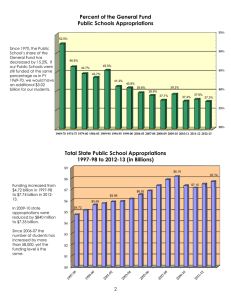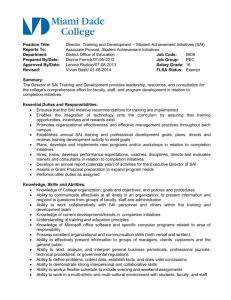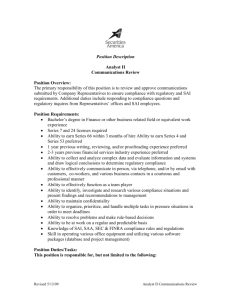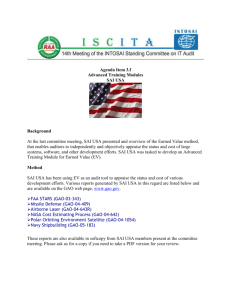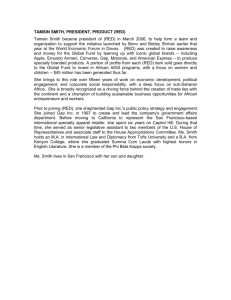BAC Charge from WACTC to examine the New
advertisement
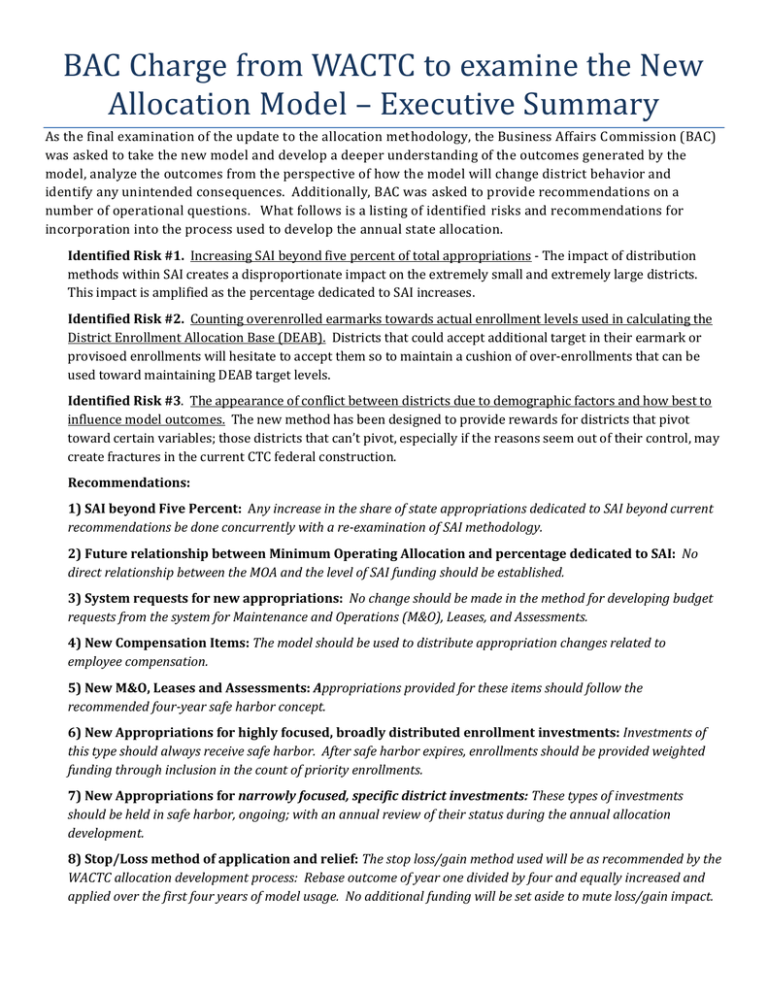
BAC Charge from WACTC to examine the New Allocation Model – Executive Summary As the final examination of the update to the allocation methodology, the Business Affairs Commission (BAC) was asked to take the new model and develop a deeper understanding of the outcomes generated by the model, analyze the outcomes from the perspective of how the model will change district behavior and identify any unintended consequences. Additionally, BAC was asked to provide recommendations on a number of operational questions. What follows is a listing of identified risks and recommendations for incorporation into the process used to develop the annual state allocation. Identified Risk #1. Increasing SAI beyond five percent of total appropriations - The impact of distribution methods within SAI creates a disproportionate impact on the extremely small and extremely large districts. This impact is amplified as the percentage dedicated to SAI increases. Identified Risk #2. Counting overenrolled earmarks towards actual enrollment levels used in calculating the District Enrollment Allocation Base (DEAB). Districts that could accept additional target in their earmark or provisoed enrollments will hesitate to accept them so to maintain a cushion of over-enrollments that can be used toward maintaining DEAB target levels. Identified Risk #3. The appearance of conflict between districts due to demographic factors and how best to influence model outcomes. The new method has been designed to provide rewards for districts that pivot toward certain variables; those districts that can’t pivot, especially if the reasons seem out of their control, may create fractures in the current CTC federal construction. Recommendations: 1) SAI beyond Five Percent: Any increase in the share of state appropriations dedicated to SAI beyond current recommendations be done concurrently with a re-examination of SAI methodology. 2) Future relationship between Minimum Operating Allocation and percentage dedicated to SAI: No direct relationship between the MOA and the level of SAI funding should be established. 3) System requests for new appropriations: No change should be made in the method for developing budget requests from the system for Maintenance and Operations (M&O), Leases, and Assessments. 4) New Compensation Items: The model should be used to distribute appropriation changes related to employee compensation. 5) New M&O, Leases and Assessments: Appropriations provided for these items should follow the recommended four-year safe harbor concept. 6) New Appropriations for highly focused, broadly distributed enrollment investments: Investments of this type should always receive safe harbor. After safe harbor expires, enrollments should be provided weighted funding through inclusion in the count of priority enrollments. 7) New Appropriations for narrowly focused, specific district investments: These types of investments should be held in safe harbor, ongoing; with an annual review of their status during the annual allocation development. 8) Stop/Loss method of application and relief: The stop loss/gain method used will be as recommended by the WACTC allocation development process: Rebase outcome of year one divided by four and equally increased and applied over the first four years of model usage. No additional funding will be set aside to mute loss/gain impact. BAC Allocation examination Charge from WACTC 1. Occurring over two years with analysis Planning for changes in the State Allocations predicted by the model for FY 2017. 2. 3. 4. 5. a. Developing a communication of nuances of known changes. While applying the WACTC Allocation System Principles (appendix A), identify any vulnerabilities to ‘unintended consequences’ the model may exhibit, including, but not limited to: a. A description of the anticipated long term impacts the system may experience using the model to establish allocation levels. b. The relationship between the Minimum Operating Allocation (MOA) and the SAI Points per Student awarded through the performance element of the model. c. Use statistical analysis to determine strength of any biases identified. Develop recommendations for budget development process changes related to: a. System requests for new appropriations from the Legislature for i. Maintenance and operations for new facilities ii. Changes in district lease costs iii. Changes in assessments on districts from local governmental entities b. Distributing new appropriations from the Legislature for i. Compensation (e.g., salary increases, health and pension rate changes) ii. Maintenance and operations for newly built facilities iii. Increases in lease costs iv. Increases in assessments from local governmental entities Develop a method for the implementation of the ‘Stop Loss’ recommendation. a. Include ability to include any ‘no-strings attached’ funding from the legislature toward the ‘Stop Loss.’ Return analysis and recommendations to the WACTC OBC at their February 2016 Meeting. BAC Workgroup Membership Kurt Buttleman, Seattle Colleges Davina Fogg, Walla Walla Community College Mary Alice Grobins, Skagit Valley College Choi Halladay, Pierce College Nate Langstraat, Whatcom Community College Chad Stiteler, Bellingham Technical College Bill Thomas, Lake Washington Institute of Technology Dawn Vinberg, Shoreline Community College Nicholas Lutes, Operating Budget Director, SBCTC – Staff to the Workgroup
